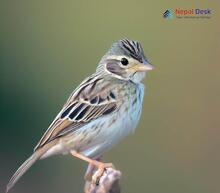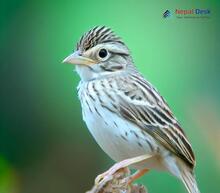The world of ornithology is filled with captivating and diverse species that continue to captivate the curiosity of both scientists and bird enthusiasts alike. An intriguing example is the Pooecetes genus, which has a rich evolutionary history and fascinating presence across various ecosystems. In this article, we will delve into the origin, evolution history, taxonomy, morphology, ecology, and presence of the Pooecetes genus in Nepal.
Origin and Evolution History
The Pooecetes genus belongs to the Passerellidae family found predominantly in the Americas. Molecular studies have revealed that the diversification of the Passerellidae family began approximately 10 million years ago. Given this timeline, it can be inferred that the Pooecetes genus also traces its roots back to this period.
Taxonomy
The taxonomy of the Pooecetes genus can be traced to a single species – Pooecetes gramineus or the Vesper Sparrow. It is essential to note that while there might be slight variations in appearance within this species based on geographical distribution, these differences do not warrant separate subspecies classifications.
Morphology
Vesper Sparrows are small birds with a length ranging from 4.9 to 6.1 inches (12.5-15.5 cm) and a wingspan between 8-11 inches (20-28 cm). They have a combination of brown streaks along their back and chest with white underbellies and distinctive white outer tail feathers. Adult Vesper Sparrows have brownish-grey faces with a distinguishing eye-ring.
Ecology
Vesper Sparrows are ground-dwelling birds typically found in open grasslands and farmlands across North America. They feed mainly on insects during the breeding season (spring and summer), while switching to seeds in the fall and winter months. The species is known for its beautiful, melodic song that usually starts soft, increases in volume, and ends with a high trill. Interestingly, they are also known to sing at dusk – a characteristic that earned them the name "Vesper."
Presence in Nepal
While the primary distribution of the Pooecetes genus is predominantly found throughout North America, occasional observation reports suggest rare sightings within Nepal and adjacent regions. However, these instances might be attributed to migration or displacement rather than native habitation.
In conclusion, the Pooecetes genus, particularly the Vesper Sparrow, remains an intriguing subject for ornithologists and bird lovers alike. As our understanding of this species advances with further research, we continue to appreciate their remarkable adaptability and the intricate nuances of their place in avian ecology.




